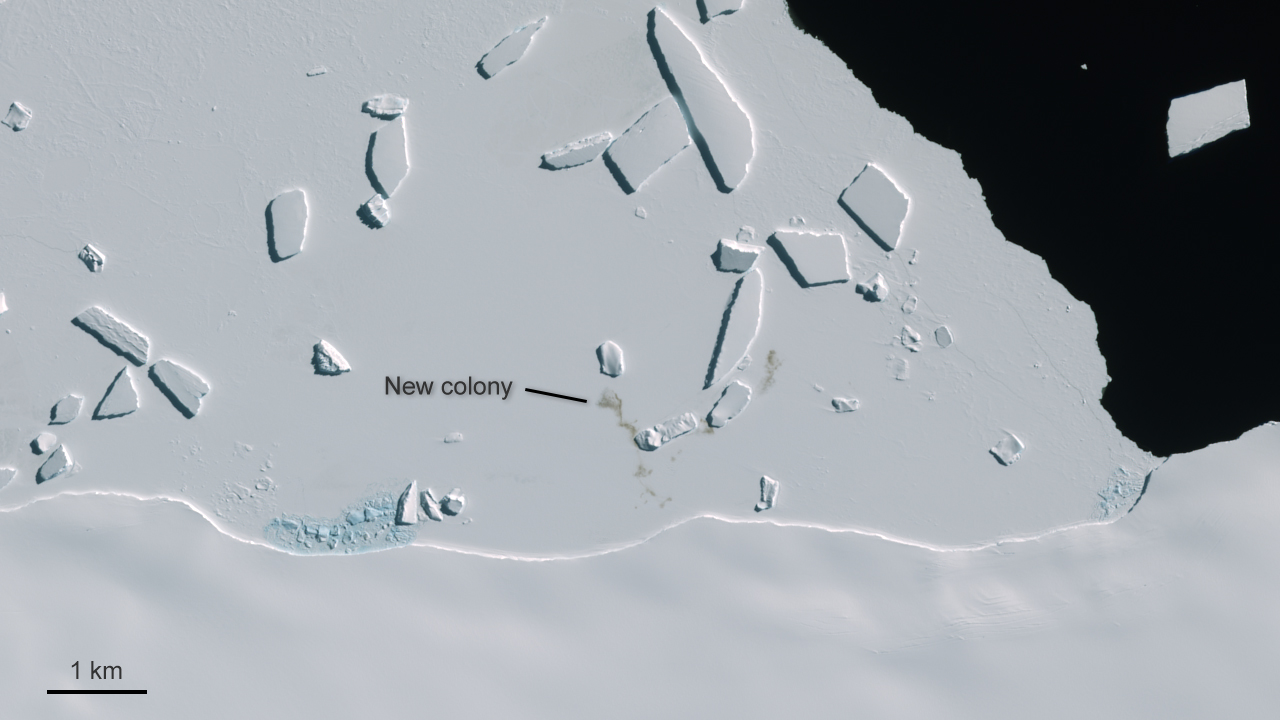Monitoring Animals on Land
Monitoring animals from space
Most individual animals are too small to be seen from space, but groups of animals can be detected from space. Satellites can monitor large animals from space using advanced imaging techniques, such as high-resolution optical and radar imaging. These tools allow researchers to observe and count animal populations, such as walruses and penguins, and track large mammals like elephants. Additionally, satellites monitor environmental changes, such as habitat loss, which directly impacts animal populations. This data is crucial for wildlife conservation efforts, helping researchers understand animal behaviour, migration patterns, and habitat use.
Penguins from Space
A penguin colony near Cape Gates was captured in this image by the Copernicus Sentinel-2 mission on 7 November 2016. Although penguins are too small to show up in satellite images, giant stains on the ice from penguin droppings – known as guano – are easy to identify. These brownish patches have allowed scientists to locate and track penguin populations across the entire continent. Credit ESA
Satellite images have revealed that there are nearly 20% more emperor penguin colonies in Antarctica than previously thought. Scientists, at the British Antarctic Survey, have used satellite data from the Copernicus Sentinel-2 mission to track penguin guano, or penguin poo, to monitor the presence of thousands of penguins.
Read the full articles here: ESA – Discovering new penguin colonies from space

Cape Gates Antarctica Credit ESA
Walrus from Space Project
With the accelerating meltdown of the Artic, warming three times faster than the global average, Artic species such as walruses are posed with threats. As walruses are forced to rest on land due to melting sea ice, they face challenges such as longer swims for food, which is affected by climate change. Arctic Ocean acidification and increased shipping also disrupt their habitats.
WWF and the British Antarctic Survey (BAS) are inviting the public to become ‘Walrus Detectives’ and aid conservation science by searching for and counting walruses in thousands of satellite images.
Credit: WWF
You can find out more at: WWF- Walrus from space
